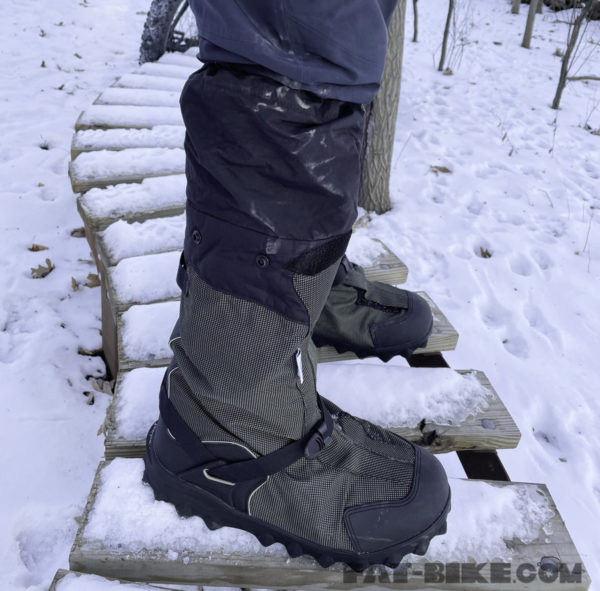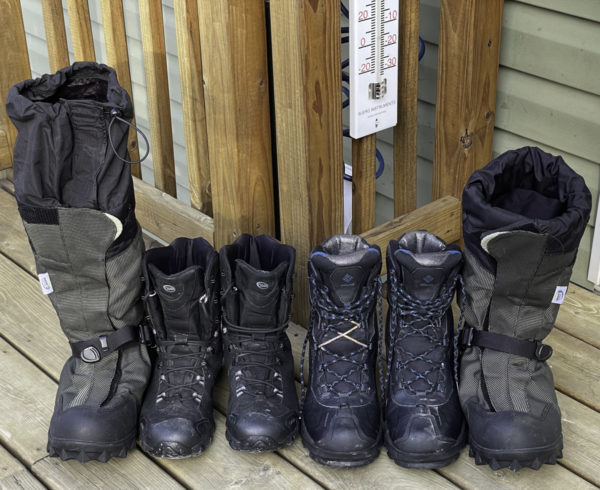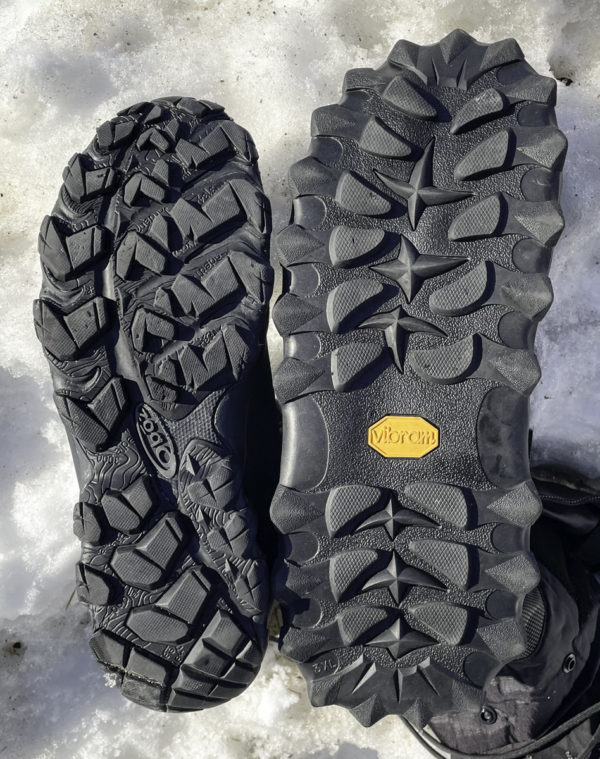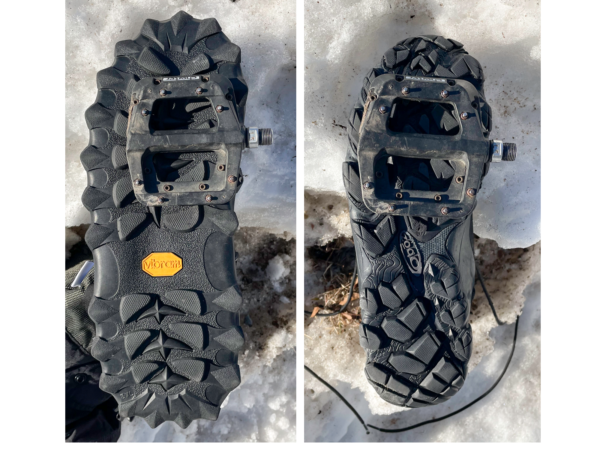Just before the pandemic, I was up in Alaska and I got the opportunity to ride out to the Knick Glacier with Christina Grande from Alaska Bike Adventures. During the ride, Christina wore a pair of Neos overboots with some running shoes inside. It was a cold ride. Cold enough for expedition weight pogies. We had to cross a small stream a mile into the ten-mile out and back route and the Neos took it all in stride. I learned a long time ago to try to wear what the guide wears so this winter, I decided to give a pair of Neos Navigator insulated overboots a try.
I purchased the boots from Neos Overshoe of Canada for $200. That’s a little less than what a good pair of winter boots would run. Most of the 200-600 gram insulated winter boots that I’ve tested over the years have been in that price range.
To determine the correct size overboot, you need to measure the shoes that you plan to wear inside. I measured my shoes and determined that I would need the XXXL!

I’ve worn and reviewed quite a few boots over the past decade. In general, the best 200/600-gram insulated winter boot will keep my feet warm for an hour or two in typical lower 48 riding conditions. Let’s say between 15 and 25 degrees Fahrenheit. Below those temperatures, I would be looking at an hour till my feet would be getting cold. I know a few tricks to keep my feet at a tolerable level of cold, but I’m always looking for better ways to stay warm and dry.
I purchased the Neos with the goal of seeing how they would compare with my normal winter riding boots on platform pedals and to see how they might work when paired with Altra Running Shoes to pank down the local singletrack trail with snowshoes.

The first thing that you notice about these overboots is their size. People that wear a smaller size might not notice but the XXXL boots are ginormous. The non-insulated versions of the Neos Overshoes do not appear to have as large of a silhouette as the insulated Neos Navigators that we’re testing. The overboot opens from the top of the shoe to the top of the boot. There was a short learning curve on how to get in and out of the boots with your shoes on but the wide opening makes it easier to slide your grippy trail running shoe into the overboot. Once inside, the boot seals up using velcro and one fastex style strap across the instep of the boot. Once inside the overboot you’re 100% waterproof to about mid-shin. They fit and feel fine walking and moving around in the snow.
The Neos Navigators come with an expandable gaiter top that can roll out to increase boot height to 20 inches. The gaiter is stored in a cuff at the top of the boot. When it was below zero, I ran the extensions up for an extra layer of insulation. The gaiter tops cover the calves to just below the knee. The warmth of these boots is better than any other boot that I’ve tested. I wore a pair of Northface Ultra 109 trail shoes inside the boots as well as Altra Torin running shoes in the single digits and just below zero. My feet stayed warm and comfortable for two-plus hours. They not only kept my feet warmer, but they also kept my legs warmer because of the extended lower leg coverage. They worked really well with a pair of Swobo Wool Knickers or Bontrager Old Man Winter Slacks.
When it comes time to put these boots to the pedals is when the width of the boot can feel a little too large to be well centered over the pedals. My feet both seemed to want to wander on the pedals a bit. The soles of the Neos are plenty tough to handle the pins on the pedals. I’m running RaceFace Chester platform pedals. The size difference in the boots is pretty obvious in the photo above. The photo below shows how the pedal hooks up with each boot.
The wider boot makes pedaling a little awkward but doesn’t make it something that would stop me from riding in them on really cold days. The benefit of warmer toes outweighs the feeling of not being centered over the pedal. I think that a larger pedal or a longer pedal spindle could possibly create a better centered pedaling surface for the larger boots. ISSI made some pedals that came with longer spindles and the new RaceFace Axis pedals are supposed to have a larger platform. The Neos also make you a little bit taller, so it means that your saddle needs to be raised slightly. I haven’t figured out the best pedals to run with the Neos but I really think that the extra warmth that they provide is worth looking into for extra cold rides.
I struck out using the Navigators with my Snowshoes. The Neos were too wide to fit into the binding system. However, for snow blowing the driveway, sledding, or ice fishing, these boots are incredible. Almost like wearing a small pair of snowshoes with their massive footprint and the best warmth that I’ve ever experienced. All of this while enjoying the comfort and support of wearing your favorite outdoor/athletic shoes.
For more information about Neos Overshoes visit – https://www.neosovershoescanada.com/





No comments yet.